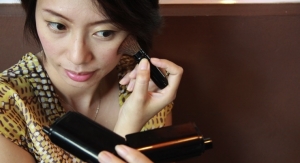02.16.17
Jala Group, a leading cosmetics company in China, has successfully used its 3D bioprinting technology to "print" Asian skin, which marks a first-ever breakthrough use of the technology.
It took 98 experiments for the company's R&D team to build the first Asian skin model using bioprinting technology. Jala Group established a special R&D team of engineering, biomaterial, cell biology, pharmaceutical and regenerative medicine scientists from both China and France to work on the project.
As a partner, France-based Bearskin Creations brought to the project advanced, unique and diversified 3D skin models, which, combined with high quality and sensitive analysis and detection methodology, provide a complete range of professional and customized solutions for the efficacy evaluation of everyday chemicals and materials.
Over the last few years, Lab Skin Creations developed and obtained a patent for bioink, a unique technology that enables in vitro reconstruction of skin tissues with 3D bioprinting. This is the technology that led to successfully building 3D bioprinted skin using skin cells from Asians.
How is Asian Skin Different from Caucasian?
Jala Group explains that there are specific differences between Asian and Caucasian skin in terms of structure and texture, and acquired factors such as diet, environment and air pollution. Asians also prefer to avoid the sun, which also affects skin characteristics.
A Cosmetics Line, Coming Soon
Jala, as part of its mission to build a recognized Chinese brand by aggregating the best that sources from around the world can offer, is committed to developing cosmetics more suitable for Asian women.
The use of bioprinted skin, an in vitro 3D structure organism, will enhance their R&D capacities including functional testing of raw materials, efficacy evaluation of cosmetics and drug development, as well as various efforts in mechanism research that facilitate the development of biotechnology.
It took 98 experiments for the company's R&D team to build the first Asian skin model using bioprinting technology. Jala Group established a special R&D team of engineering, biomaterial, cell biology, pharmaceutical and regenerative medicine scientists from both China and France to work on the project.
As a partner, France-based Bearskin Creations brought to the project advanced, unique and diversified 3D skin models, which, combined with high quality and sensitive analysis and detection methodology, provide a complete range of professional and customized solutions for the efficacy evaluation of everyday chemicals and materials.
Over the last few years, Lab Skin Creations developed and obtained a patent for bioink, a unique technology that enables in vitro reconstruction of skin tissues with 3D bioprinting. This is the technology that led to successfully building 3D bioprinted skin using skin cells from Asians.
How is Asian Skin Different from Caucasian?
Jala Group explains that there are specific differences between Asian and Caucasian skin in terms of structure and texture, and acquired factors such as diet, environment and air pollution. Asians also prefer to avoid the sun, which also affects skin characteristics.
A Cosmetics Line, Coming Soon
Jala, as part of its mission to build a recognized Chinese brand by aggregating the best that sources from around the world can offer, is committed to developing cosmetics more suitable for Asian women.
The use of bioprinted skin, an in vitro 3D structure organism, will enhance their R&D capacities including functional testing of raw materials, efficacy evaluation of cosmetics and drug development, as well as various efforts in mechanism research that facilitate the development of biotechnology.





















